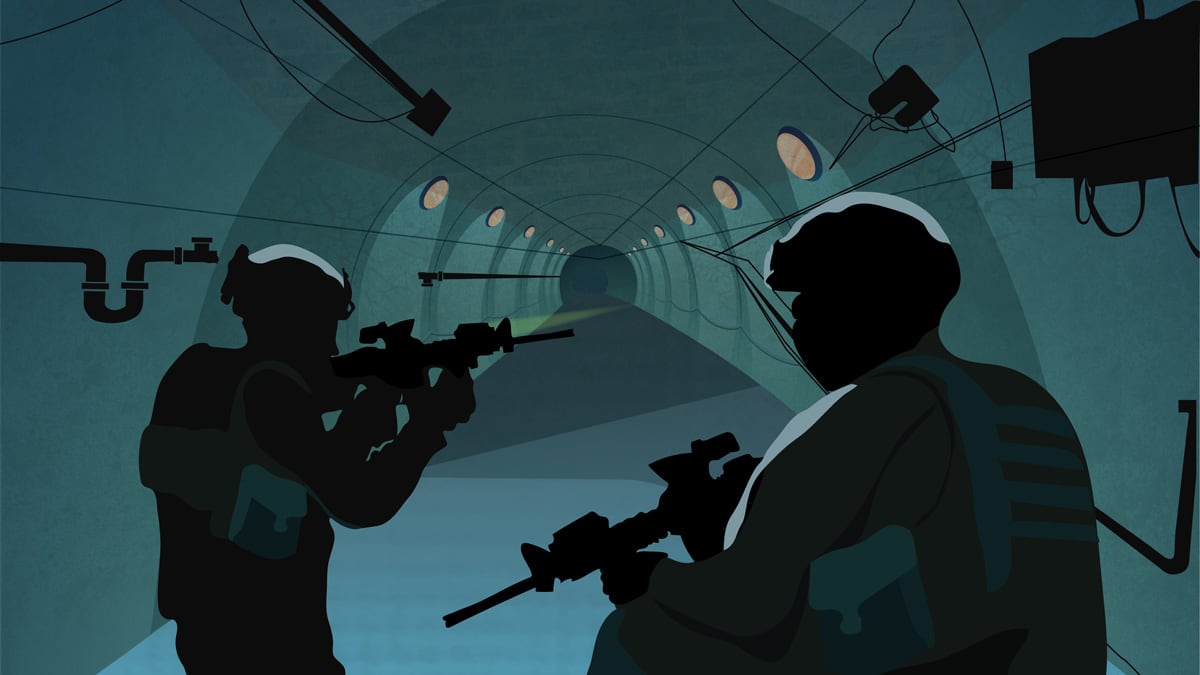New technologies being developed by the United States and its partners seek to tackle age-old challenges that troops face when they enter the multi-dimensional nightmare that is urban combat.
One such device that technicians put through its paces is a robotic platform that soldiers or Marines can guide by using hand and body movements to enter buildings, tunnels or other areas to navigate and map in either a guided or autonomous mode, according to an Army release.
That device was tested out by developers this past July in New York City during the third annual Contested Urban Environment Strategic Challenge, or CUE. The first was held in 2017 in Adelaide, Australia and the second took place last year in Montreal, Canada. Net year’s is planned for a not-yet-identified city in the United Kingdom.
Groups from the United States, United Kingdom, Australia, Canada and New Zealand have participated in the event, which is dubbed a technical cooperation program that focuses on contested urban environments. Also, the Army’s Combat Capabilities Development Command, Army Research Lab, Armaments Center, the Engineer and Research Center and the Command, Control, Communications, Computers, Cyber, Intelligence, Surveillance and Reconnaissance (C5ISR) Center.
RELATED

The Army recently put the majority of its brigade combat teams through a weeklong course on operating in subterranean environments while the Marine Corps is wrapping up year one of a five-year urban-focused experiment called Metropolis II.
Most statistical analysis of population growth and the likelihood of future conflict shows a rise in urban-centric fighting. While troops have fought in cities for centuries, the classic options have included primarily siege warfare of smaller urban centers or city sections or bypassing cities entirely on the way to other objectives.
There’s been good reason. The urban canyons and multiple threats from inside buildings, in underground tunnel complexes and from around nearly every corner put troops, mounted or dismounted, in major disadvantages.
One way to meet those threats is technology, which is the CUE focus.
Some of those efforts tackled problems that include detecting unmanned aircraft systems, accurately mapping areas and structures, maintaining communications with and awareness of friendly activities, protecting friendly forces from explosives or vehicles, and detecting indications of potentially hostile activity.
“The overarching objective of CUE is to get greater insights into the nature of urban challenges and increase our understanding of the limitations of technologies that support operational concepts of operations,” said Mary J. Miller, Principal Deputy, Director of Defense Research and Engineering for Research and Technology.
One element of modern battle, radio communications, can sometimes be taken for granted in less populated, rural areas. But urban features can block or reflect signals. And the mass of devices being used by people in cities also crowds out radio signals.
Scientists participating in the CUE had collaborated virtually in the year leading up to the event, but actually trying to deploy tech in a real urban environment presented its own difficulties.
“That’s why we have field experiments. These technologies were developed initially in austere laboratory environments,” said Robert Hesse, U.S. national representative and principal planner for CUE 19. “Here, they faced a test in a relevant environment, and in some cases with soldiers or Marines as operators.”
And putting the robot in front of troops helps protect the human while also learning more about the dense urban battlefield.
“In the future we will protect our soldiers by removing them from the effects of an initial undetected threat. Virtual presence, by remote autonomous systems, is a means which will allow us to realize this. The robot will be hit first,” said Geoffrey White, Defence Scientist (Soldier Autonomy), Land Division Defence Science and Technology, Australia.
The robot that could move via troops’ hand and body movements does its mapping and navigation functions using LiDAR and other sensing.
The operator guided it using mixed reality, looking through a head-mounted augmented reality display -- and recognizing a soldier’s hand gestures with help from a “hand-pose detection glove”.
The U.S. team’s goal was to pair an autonomous ground robot with a soldier-equipped augmented reality to provide situational awareness. The Australian team’s work was to bring the glove worn by the operator and the software that helped the robot to recognize the commands.
“Ultimately we will use this information to create capabilities that increase mission success while reducing risk to our military forces in urban operations,” Miller said.
Todd South has written about crime, courts, government and the military for multiple publications since 2004 and was named a 2014 Pulitzer finalist for a co-written project on witness intimidation. Todd is a Marine veteran of the Iraq War.



